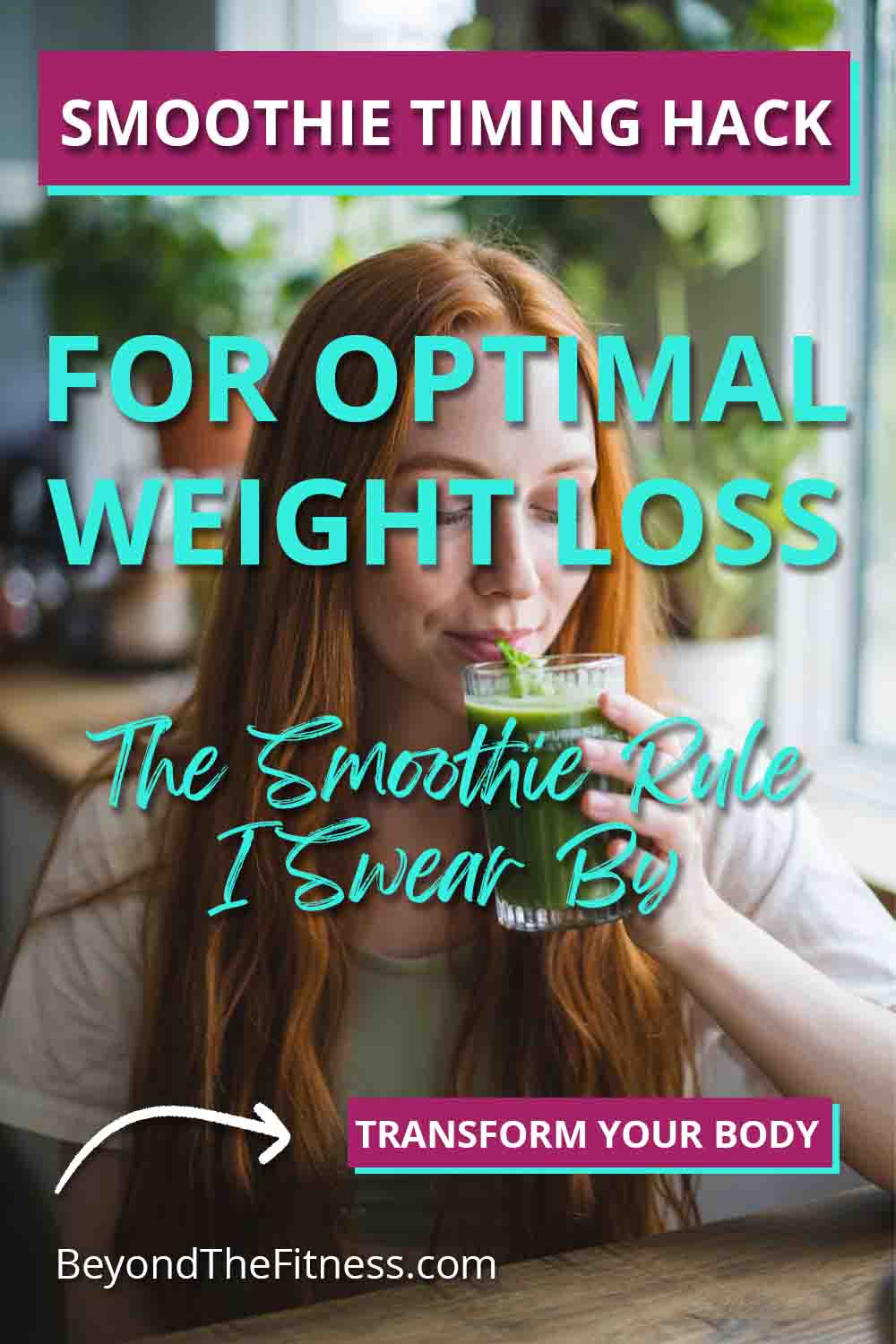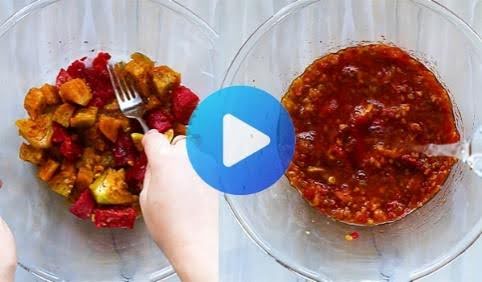Smoothies can be a fantastic tool when you are trying to lose weight. They are quick, easy, and you can pack a lot of good stuff into one glass. But I often get asked, does it matter when you drink your smoothie? Is there a magic time that helps you lose weight faster? Let’s dive into this and figure out what might work best for you.
Why Choose Smoothies for Your Weight Loss Journey?
Before we talk about timing, let’s quickly touch on why smoothies can be helpful.
- Nutrient Powerhouses: You can blend fruits, vegetables, protein sources, and healthy fats all together. This means you get lots of vitamins, minerals, and fiber in one go. Getting enough nutrients is super important when you are cutting back on calories.
- Feeling Full: Smoothies, especially those with protein and fiber, can help you feel full and satisfied. This can stop you from snacking on less healthy things between meals. Fiber slows down digestion, and protein takes longer to break down, both helping keep hunger away.
- Convenience: Let’s be real, life gets busy. Whipping up a smoothie takes just a few minutes. This makes it easier to stick to your healthy eating plan even on hectic days.
- Calorie Control: When you make your own smoothies, you control exactly what goes in. This helps you manage your calorie intake more easily than grabbing something on the go.
But, a quick word of caution. Not all smoothies are created equal. Some pre-made or juice-bar smoothies can be loaded with sugar and calories. Making them yourself is usually the best bet for weight loss.
Does Timing Really Make a Difference?
Now, onto the main question: does the time you drink your smoothie impact weight loss? The answer is yes, it can. Our bodies handle food differently at various times of the day. Things like our metabolism (how fast our body burns calories), insulin sensitivity (how well our body uses sugar), and energy needs change throughout the day.
Think about it like this: eating a big meal right before bed might not be ideal because your body is slowing down and preparing for rest. It doesn’t need a huge surge of energy then. On the other hand, fueling up before exercise makes sense because your muscles need that energy.
So, timing your smoothie strategically can potentially help you:
- Manage hunger better.
- Fuel workouts effectively.
- Recover from exercise faster.
- Control overall calorie intake.
- Support your metabolism.
Let’s look at the pros and cons of drinking smoothies at different times.
Morning Smoothie: Starting Your Day Right
Many people love starting their day with a smoothie. Is this the best time for weight loss?
Potential Benefits:
- Metabolic Kickstart: Eating breakfast helps wake up your metabolism after a night of fasting (sleeping). A nutrient-dense smoothie can provide the energy your body needs to start burning calories efficiently.
- Front-Loading Calories: Some research suggests that eating more of your calories earlier in the day might be beneficial for weight management. A substantial morning smoothie can help you feel full and potentially eat less later on.
- Sustained Energy: A balanced smoothie with protein, fiber, and healthy fats can provide steady energy throughout the morning, preventing that mid-morning slump and craving for sugary snacks.
- Setting a Healthy Tone: Starting your day with a healthy choice can motivate you to make better food decisions throughout the rest of the day.
Things to Consider:
- Balance is Key: Your morning smoothie needs the right mix. Focus on protein (like Greek yogurt, protein powder, or silken tofu), fiber (spinach, kale, chia seeds, flax seeds, oats), and healthy fats (avocado, nut butter). Don’t just load up on fruit, as this can cause a blood sugar spike and crash later.
- Avoid Sugar Bombs: Be mindful of added sugars from flavored yogurts, juices, or sweeteners. Stick to whole fruits for sweetness and unsweetened liquids like water or almond milk.
For many women I work with, a morning smoothie is a game-changer. It helps them feel energized, controls cravings, and ensures they get a good dose of nutrients first thing.
Pre-Workout Smoothie: Fueling Your Fitness
Drinking a smoothie before you exercise can be a great way to boost your performance.
Potential Benefits:
- Energy Boost: Carbs are your body’s main fuel source during exercise. A smoothie with easily digestible carbs (like bananas or dates) can give you the energy needed to power through your workout.
- Muscle Protection: Including some protein can help prevent muscle breakdown during exercise, especially if you are doing strength training.
- Hydration: Smoothies contribute to your daily fluid intake, which is crucial for performance and overall health.
Things to Consider:
- Timing: You don’t want to drink a huge smoothie right before you start exercising, as it might cause stomach upset. Aim for about 60-90 minutes before your workout. If you need something closer to your workout time (30 minutes before), make it smaller and focus on easily digestible carbs.
- Ingredients: Keep it relatively simple. Too much fat or fiber right before a workout can slow digestion and feel heavy. Focus on carbs and a moderate amount of protein.
- Workout Type: The ideal pre-workout smoothie might differ depending on whether you are doing cardio, strength training, or endurance activities. Longer or more intense workouts might require more fuel.
A pre-workout smoothie can be especially helpful if you exercise first thing in the morning and don’t have time for a full meal.
Post-Workout Smoothie: Recovery and Repair
What you consume after exercise is just as important as what you eat before. This is when your body needs nutrients to repair muscle tissue and replenish energy stores.
Potential Benefits:
- Muscle Repair: Exercise, especially strength training, creates tiny tears in your muscle fibers. Protein is essential for repairing these tears and building stronger muscles. A post-workout smoothie with a good protein source helps kickstart this process. More muscle mass can help boost your metabolism over time.
- Glycogen Replenishment: Your muscles use stored carbohydrates (glycogen) for energy during exercise. Consuming carbs after your workout helps refill these stores, aiding recovery and preparing you for your next session.
- Reduced Muscle Soreness: Getting the right nutrients soon after exercise may help reduce muscle soreness and fatigue.
- Convenience: It’s an easy and quick way to get those crucial recovery nutrients in, especially when you might not feel like eating a full meal right away.
Things to Consider:
- The “Anabolic Window”: You might have heard about a specific window (often cited as 30-60 minutes) after exercise when your body is primed to absorb nutrients. While it’s good to refuel reasonably soon, don’t stress if you can’t drink your smoothie immediately. Getting adequate protein and carbs within a few hours is still very beneficial.
- Protein and Carb Ratio: Aim for a mix of protein and carbohydrates. A common recommendation is a carb-to-protein ratio of around 3:1 or 4:1 for endurance recovery, or closer to 2:1 for strength training recovery.
- Quality Ingredients: Choose high-quality protein (whey, casein, soy, pea) and complex carbs (like oats or whole fruits) along with some simple carbs (like a banana) for faster glycogen replenishment.
For weight loss, a post-workout smoothie helps ensure you are rebuilding muscle (which burns more calories at rest) and recovering properly so you can stay consistent with your exercise routine.
You Might Be Interested In: Learning more about The Complete Smoothie Detox & Weight Loss Program
Meal Replacement Smoothie: A Calorie-Controlled Option
Sometimes, replacing a regular meal with a smoothie can be an effective weight loss strategy.
Potential Benefits:
- Calorie Control: It’s easier to track the calories in a smoothie you make yourself compared to a complex meal. This can help you stay within your daily calorie target.
- Nutrient Density: You can pack a meal’s worth of nutrients into a single smoothie, ensuring you are not missing out on essential vitamins and minerals even while cutting calories.
- Convenience: Perfect for busy lunches or quick dinners when you don’t have time to cook.
Things to Consider:
- Nutritional Completeness: If you are replacing a whole meal, your smoothie needs to be balanced and substantial. It must contain adequate protein, healthy fats, fiber, and carbohydrates to keep you full and provide enough energy. Aim for at least 300-400 calories, maybe more depending on your needs.
- Sustainability: Relying too heavily on meal replacement smoothies might not be sustainable long-term for everyone. It’s important to learn healthy eating habits for whole foods as well. Using it occasionally or for one meal a day can work well.
- Chewing Satisfaction: Some people miss the act of chewing and find liquid meals less satisfying psychologically. Pay attention to how you feel.
Using a smoothie to replace a meal where you typically struggle to make healthy choices (like a rushed lunch) can be a smart move for weight loss.
Snack Smoothie: Bridging the Gap
A smaller smoothie can also work well as a healthy snack between meals.
Potential Benefits:
- Curbing Hunger: A mid-afternoon smoothie can prevent you from getting overly hungry before dinner, which often leads to overeating.
- Nutrient Boost: It’s a great way to sneak in extra servings of fruits and vegetables.
- Energy Pick-Me-Up: Can provide a natural energy boost to beat the afternoon slump, replacing sugary drinks or snacks.
Things to Consider:
- Portion Size: Keep snack smoothies smaller than meal replacement ones. Aim for around 150-250 calories.
- Balance: Even as a snack, include some protein and fiber to promote satiety, not just fruit juice. Think half a banana, a scoop of protein powder, spinach, and water or unsweetened almond milk.
A snack smoothie is a much better choice than reaching for chips or cookies when hunger strikes.
Evening or Bedtime Smoothie: Pros and Cons
What about drinking a smoothie later in the day or before bed?
Potential Benefits:
- Muscle Repair Overnight: Some studies suggest that consuming protein, particularly slow-digesting casein protein, before sleep can help with muscle recovery and growth overnight.
- Curbing Late-Night Cravings: A small, healthy smoothie might satisfy cravings for sweets or unhealthy snacks before bed.
- Specific Nutrients for Sleep: Ingredients like tart cherry juice or almonds (containing magnesium) could potentially promote better sleep, although more research is needed.
Potential Downsides:
- Calories Before Inactivity: Consuming a significant number of calories right before you become inactive for several hours might not be ideal for weight loss for some people. Your metabolism naturally slows down during sleep.
- Digestive Issues: A large or heavy smoothie close to bedtime could cause indigestion or heartburn for some individuals.
- Blood Sugar: Depending on the ingredients, it could impact blood sugar levels overnight.
Considerations:
- Keep it Small and Simple: If you choose an evening smoothie, make it light, low in sugar, and perhaps focused on protein like casein or Greek yogurt.
- Listen to Your Body: Pay attention to how it affects your sleep and digestion.
For most people aiming for weight loss, concentrating smoothie intake earlier in the day is often more beneficial. However, a small, protein-focused smoothie might work for some, especially active individuals focusing on muscle recovery.
Special Considerations for Women
Women’s bodies have unique rhythms and needs that can influence the best timing for nutrition.
- Hormonal Fluctuations: Throughout the menstrual cycle, hormonal changes can affect appetite, energy levels, and metabolism. You might find you need more fuel or feel hungrier at certain times of the month. Timing your smoothies (perhaps as satisfying snacks) could help manage cravings or energy dips associated with these hormonal shifts.
- Nutrient Needs: Women have specific nutrient needs, such as iron (especially pre-menopause) and calcium (important for bone health throughout life). Smoothies are a great way to incorporate iron-rich greens (like spinach, best paired with a vitamin C source like berries for absorption) and calcium sources (like yogurt, fortified plant milks, or chia seeds). Tailoring your smoothie ingredients and timing can help meet these needs effectively. For example, a calcium-rich smoothie mid-morning or afternoon could be beneficial.
- Metabolism and Aging: As women age, particularly around menopause, metabolic rate can naturally slow down. Focusing on protein-rich smoothies, especially post-workout or in the morning, can help support muscle mass, which is crucial for maintaining a healthy metabolism.
Paying attention to your own body’s signals, energy levels, and cycle can help you personalize the best smoothie strategy for your weight loss goals.
Building the Ultimate Weight Loss Smoothie
Regardless of when you drink it, what’s in your smoothie is crucial for weight loss.
- Protein Power: Aim for 15-30 grams of protein per smoothie, especially if it’s a meal replacement or post-workout fuel. Good sources include:
- Plain Greek yogurt
- Cottage cheese
- Whey, casein, soy, pea, or hemp protein powder
- Silken tofu
- Fiber Friends: Fiber keeps you full and aids digestion. Include:
- Leafy greens (spinach, kale – you often can’t taste them)
- Chia seeds, flax seeds, hemp seeds
- Oats (rolled oats add creaminess)
- Low-sugar fruits (berries, avocado)
- Vegetables (cucumber, celery, zucchini)
- Healthy Fats: Small amounts add satiety and nutrients.
- Avocado (makes smoothies super creamy)
- Nut butters (watch portion sizes)
- Nuts and seeds
- Smart Carbs: Choose whole food sources.
- Fruits (berries, bananas, mangoes – be mindful of quantity)
- Vegetables
- Oats
- Liquid Base: Opt for low-calorie, unsweetened options.
- Water
- Unsweetened almond, soy, oat, or cow’s milk
- Coconut water (use in moderation due to natural sugars)
- Green tea (chilled)
- Limit or Avoid:
- Fruit juices (high in sugar, low in fiber)
- Sweeteners (honey, maple syrup, agave – use sparingly or skip)
- Flavored yogurts (often high in added sugar)
- Ice cream or sherbet
- Too much high-sugar fruit
So, What’s the Verdict? The “Best” Time is Personal
After looking at all the options, you can see there isn’t one single “best” time to drink a smoothie for weight loss that applies to everyone. The optimal time depends heavily on your individual:
- Workout Schedule: Pre- or post-workout smoothies make sense if you exercise regularly.
- Daily Routine: A morning smoothie might be perfect if you struggle with healthy breakfasts. A meal replacement smoothie might suit a busy lunch schedule.
- Hunger Patterns: Use a snack smoothie to manage hunger between meals if that’s when you tend to go off track.
- Overall Diet: How does the smoothie fit into your total daily calorie and nutrient intake? It’s just one piece of the puzzle.
- Personal Preferences: When do you actually enjoy drinking a smoothie? If you force yourself to drink one at a time you hate, you won’t stick with it.
My Advice:
- Define the Purpose: Why are you drinking the smoothie? Is it for breakfast energy, workout fuel, recovery, a meal replacement, or a snack? This will guide your timing and ingredients.
- Prioritize Protein and Fiber: No matter the time, make sure your smoothie is balanced to support satiety and stable blood sugar.
- Listen to Your Body: Pay attention to your energy levels, hunger cues, and digestion. If a morning smoothie leaves you hungry by 10 am, adjust the ingredients or timing. If a pre-workout smoothie makes you feel sluggish, drink it earlier or make it lighter.
- Focus on Consistency: Drinking a healthy, well-balanced smoothie consistently, at a time that fits your life, is far more important for weight loss than finding one perfect minute on the clock. Integrate it into your routine in a way that feels sustainable and supports your overall healthy habits.
Think about your typical day. When do you feel the hungriest? When do you exercise? When do you struggle most with unhealthy food choices? Answering these questions can help you pinpoint the time slot where a smoothie could provide the biggest benefit for you. Whether it’s kickstarting your metabolism in the morning, fueling your workout, aiding recovery, or preventing an afternoon slump, choose the time that aligns best with your goals and lifestyle.
Related YouTube Video
Final Thoughts
Smoothies can definitely be a valuable part of a weight loss plan. While drinking one in the morning, before or after a workout, or even as a meal replacement can offer specific benefits, the most crucial factors are the quality of the ingredients and how the smoothie fits into your overall daily routine and calorie goals. Focus on creating balanced smoothies rich in protein and fiber, low in added sugars, and listen to your body to find the timing that best supports your energy levels, workout schedule, and hunger management. Consistency with healthy habits is always the key to long-term success.







